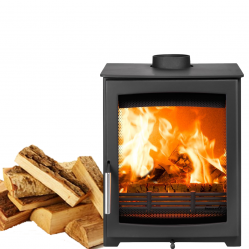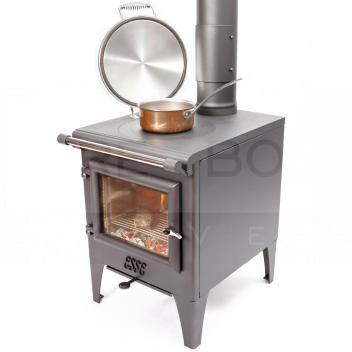This product qualifies for the following promotions
- ** Slash 15% off TODAY! Don't miss out - even deeper savings await at your local showroom or installer. Call now to unlock them! 0117 9415678**
Technical Details
| Product Title | Esse Warmheart, Wood Fired Cook Stove, EcoDesign Ready |
|---|---|
| Product Keyword | Esse Warmheart, Wood Fired Cook Stove, EcoDesign Ready, Multi-fuel Stove, Sustainable Heating |
| Energy Efficiency | A+ |
| SIA Ecodesign Ready | Yes |
| Output (Nominal) | 5kW |
| Smoke Control (DEFRA) | No |
| Boiler Stove | No |
| Colour | Black |
| Flue Outlet Size | 150mm - 6in |
| Fuel | Wood |
| Height | 691mm |
| Width | 500mm |
| Depth | 600mm |
| Nominal Output (Range) | 3kW - 5kW |
| Width (Range) | 500mm - 600mm |
| Height (Range) | 600mm - 700mm |
Product Description
Esse Warmheart Wood Fired Cook Stove
The Esse Warmheart is the epitome of traditional heating and cooking. An EcoDesign-ready stove that will bring warmth and culinary delight to your home.
- EcoDesign Ready: Meets the latest standards for energy efficiency and emission levels.
- Wood Fired: Utilizes wood as a renewable source of energy for cooking and heating.
- Cooktop Surface: Spacious cooktop for boiling, simmering, and frying your favorite dishes.
- Oven Baking: Includes an oven for baking, slow-cooking, or roasting with consistent heat distribution.
- Heat Output: Capable of warming your living space while you cook.
- Build Material: Constructed with robust materials for durability and long service life.
- Stylish Design: Classic design that fits both traditional and modern kitchen aesthetics.
- Color Options: Available in a variety of colors to match your kitchen decor.
- Efficient Fuel Consumption: Designed to maximize heat output while minimizing fuel usage.
- Easy to Clean: Features an easy-to-clean cooktop and oven, making maintenance a breeze.
File Downloads
Reviews
Stoves > Wood Burning Stoves

Woodburning stoves
Wood is one of the only renewable fuel sources in our lifetime. When sourced sustainably and burnt responsibly, it can be carbon-neutral as it emits as much carbon when burnt as it absorbs whilst growing. Therefore, the common question of ‘are woodburning stoves bad for the environment?’ can be answered with a simple no- not if they are used sensibly. Woodburning stoves are one of the cleanest and most efficient ways of heating your home. To ensure maximum efficiency and minimum environmental impact, only kiln-dried or seasoned wood should be used, with a moisture content of less than 20%. We completely understand how complex it can be selecting the right stove for your needs, so here at Firebox Stoves we can advise you on all aspects of choosing, installing and using the best woodburning stove for you.
With showrooms located across the UK, stocking a wide range of the best woodburning stoves on the market, we are confident we will find something for everyone. Whether you are on a budget and are looking for a cheap woodburning stove, or you are limited on space and only have room for a small woodburning stove, we have a large range of sizes and styles, including traditional, contemporary, steel or cast iron and even glass-fronted inset woodburning stoves!
From the very start of the process, to after-care and warranty claims, our expert team and friendly, experienced installers will always be on hand to answer your questions. We can provide advice on every aspect of stove use and maintenance, including how to clean the glass on a woodburning stove and where to purchase local and sustainably sourced kiln-dried and seasoned wood. We also provide extras such as moisture metres and stove thermometers, to help you learn about your stove and therefore maximise performance from your lovely new woodburning stove.





